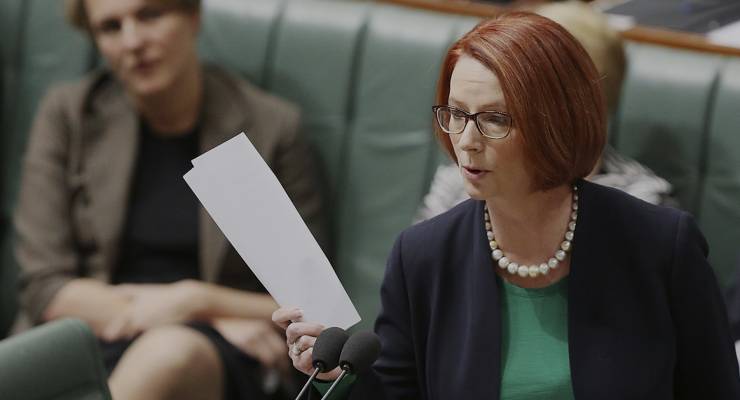
With its small, elderly, highly conservative readership, The Australian lacks direct influence on the electorate. This is all the more so as staff cuts at the loss-making broadsheet, and a greater focus on campaigning journalism, have resulted in less investigative reporting and news-breaking (there remain plenty of “exclusive” drops, but few actual scoops).
That doesn’t mean the paper lacks clout. It still retains the ability to influence other outlets, especially in the morning news cycle, particularly at ABC Radio, with its wide regional reach, where many producers take their cue from what has appeared in the national broadsheet that morning in determining what issues to discuss. It may not have a large readership, but most journalists, editors and producers read it, ensuring its campaigns are noticed and, often, echo around the country.
Campaigns also displace actual news or other political narratives, making it more difficult for political parties to push out messages. There’s only so much media real estate to go round, and a five-article-a-day vendetta in the national broadsheet crowds out messages from government and opposition alike.
With enough of an echo, unreality can take on its own weight and heft.
The Australian‘s confected campaign against Julia Gillard for alleged improprieties by her at the Australian Workers’ Union in the early 1990s dominated news coverage for weeks at a time during her period as prime minister. That was despite The Australian being repeatedly forced to apologise for errors in its reporting, and despite Gillard giving not one but two extended media conferences, in which journalists were invited to fire their best shots at her — before ultimately running out of questions, having been unable to leave a mark. As the non-scandal dominated political coverage for periods in 2012, it sucked oxygen away from matters of substance, and added to an atmosphere of instability that benefited Kevin Rudd’s campaign of treachery and destabilisation against her.
The paper is also read, naturally, by politicians. It’s influential among some (in the words of a Labor politician) “weak minded” ALP MPs, but most Labor MPs accept the partisan opposition of the paper as part of the political landscape, and most have sufficient experience to not be concerned about being attacked by it. But plainly it wields a far greater influence among conservative politicians, for whom it provides a valuable resource when they share targets (Gillian Triggs, for example), enabling a feedback loop in which politicians ask questions about articles in the paper, which then produce more articles.
This can magnify the impact of campaigns, but isn’t necessarily a positive, because it can distort perceptions of reality. For example, a number of Liberal champions of the abolition of section 18C of the Racial Discrimination Act were actually convinced — and still are — that 18C was of huge importance to the electorate. This is partly because the issue is of interest to the membership base of the Liberal Party (which, being elderly, white and reactionary, means they are the prime demographic of The Australian). It is also because the paper never stopped talking about it, creating the illusion that people outside the political bubble, News Corp and the far right supported reform — or even understood the issue.
With enough of an echo, unreality can take on its own weight and heft.








Crikey is committed to hosting lively discussions. Help us keep the conversation useful, interesting and welcoming. We aim to publish comments quickly in the interest of promoting robust conversation, but we’re a small team and we deploy filters to protect against legal risk. Occasionally your comment may be held up while we review, but we’re working as fast as we can to keep the conversation rolling.
The Crikey comment section is members-only content. Please subscribe to leave a comment.
The Crikey comment section is members-only content. Please login to leave a comment.